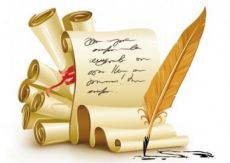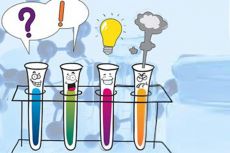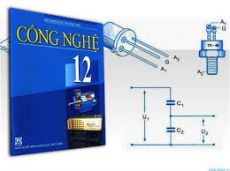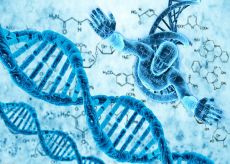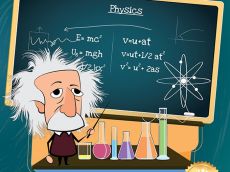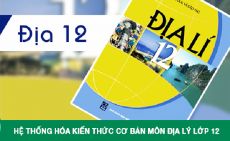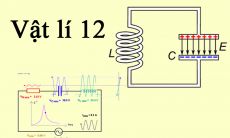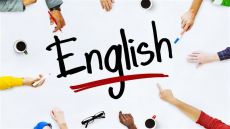Read the following passage and mark the letter A, B, C, or D on your answer sheet to indicate the correct answer to each of the questions from 36 to 42.
Pittsburgh, Pennsylvania, is located where the Allegheny and Monongahela rivers unite to form the Ohio River. Its fascinating history began in 1758 when General John Forbes and his British and colonial army captured Fort Duquesne from the French and renamed it Fort Pitt, for the British statesman William Pitt the Elder. After an agreement between the Native American tribes and William Penn's family, settlers henan arrivinn Pittsburah was laid out (1764) by John Campbell in the area around the fort.
Following the American Revolution, the town became an outfitting point for settlers traveling westward down the Ohio River. Pittsburgh's strategic location and wealth of natural resources spurred its commercial and industrial growth in the nineteenth century. A blast furnace, erected by George Anschutz about 1792, was the forerunner of the iron and steel industry that for more than a century was the city's economic power. By 1850, it was known as the "Iron City". The Pennsylvania Canal and the Portage Railroad, both completed in 1834, opened vital markets for trade and shipping.
After the American Civil War, great numbers of European immigrants swelled Pittsburgh's population, and industrial magnates such as Andrew Carnegie, Henry Clay Frick, and Thomas Mellon built their steel empires there. The city became the focus of historic friction between labor and management, and the American Federation of Labor was organized there in 1881. By 1900, the city's population had reached 321,616. Growth continued nearly unabated through World War II, and during the war years, Pittsburgh was a boom town.
During this period of economic and population growth, Pittsburgh became a grimy, polluted industrial city. After the war, however, the city undertook an extensive redevelopment program, with emphasis on smoke-pollution control, flood prevention, and sewage disposal.
In 1957, it became the first American city to generate electricity by nuclear power. By the late 1970s and early 80s, the steel industry had virtually disappeared, but Pittsburgh successfully diversified its economy through more emphasis on light industries and on such high-technology industries as computer software, industrial automation (robotic), and biomedical and environmental technologies.
Câu 36 : In the mid-eighteenth century, what two countries wanted to control the area now known as Pittsburgh?
Suy nghĩ và trả lời câu hỏi trước khi xem đáp án
Lời giải:
Báo saiĐáp án B
Vào giữa thế kỷ thứ 18, hai quốc gia nào đã muốn kiểm soát khu vực mà bây giờ được gọi là Pittsburgh?
A. Anh và Mỹ B. Anh và Pháp
C. Anh và Đức D. Anh và Pennsylvania
Thông tin trong bài: "Its fascinating history began in 1758 when General John Forbes and his British and colonial army captured Fort Duquesne from the French and renamed it Fort Pitt..." (Lịch sử thú vị của nó bắt đầu vào năm 1758 khi Tướng John Forbes cùng quân đội Anh và thuộc địa của ông chiếm được Pháo đài Duquesne từ tay người Phấp và đổi tên thành Pháo đài Pitt...)
Câu 37 : When did settlers begin arriving in Pittsburgh?
Suy nghĩ và trả lời câu hỏi trước khi xem đáp án
Lời giải:
Báo saiĐáp án A
Những người định cư bắt đầu đến Pittsburgh vào khi nào?
Thông tin trong bài: "After an agreement between the Native American tribes and William Penn's family, settlers began arriving." (Sau một thỏa thuận giữa cấc bộ lạc người Mỹ bản địa và gia đình của William Penn, những người đinh cư bắt đầu đến.) _ sau một thỏa thuận giữa người Mỹ bản địa và gia đình Pen.
Câu 38 : What became the most important industry in Pittsburgh following the American Revolution?
Suy nghĩ và trả lời câu hỏi trước khi xem đáp án
Lời giải:
Báo saiĐáp án B
Ngành công nghiệp quan trọng nhất ở Pittsburgh sau Cách mạng Mỹ là gì?
A. Ngành công nghiệp vận tải biển B. Ngành công nghiệp gang thép
C. Ngành công nghiệp trang thiết bị D. Công nghiệp phần mềm máy tính
Thông tin trong bài: "A blast furnace, erected by George Anschutz about 1792, was the forerunner of the iron and steel industry that for more than a century was the city's economic power." (Một lò cao do George Anschutz xây dựng vào khoảng năm 1792, là tiền thân của ngành công nghiệp gang thép mà trong hơn một thế kỷ là sức mạnh kinh tế của thành phố.)
Câu 39 : According to the passage, who moved to Pittsburgh in great numbers after the Civil War?
Suy nghĩ và trả lời câu hỏi trước khi xem đáp án
Lời giải:
Báo saiĐáp án D
Theo bài đọc, ai đã chuyển đến Pittsburgh với số lượng lớn sau Nội chiến?
A. Các bộ lạc thổ dân Mỹ bản địa B. Binh lính Anh
C. Liên minh cựu chiến binh D. Người nhập cư châu Âu
Thông tin trong bài: "After the American Civil War, great numbers of European immigrants swelled Pittsburgh's population, and industrial magnates such as Andrew Carnegie, Henry Clay Frick, and Thomas Mellon built their steel empires there." (Sau Nội chiến Mỹ, số lượng lớn người nhập cư châu Âu đã làm tăng dân số của Pittsburgh, và các ông trùm công nghiệp như Andrew Carnegie, Henry Clay Frick và Thomas Mellon đã xây dựng để chế thép của mình ở đó.)
Câu 40 : Which of the following phrases is closest in meaning to the phrase "focus of historic friction" in the passage?
Suy nghĩ và trả lời câu hỏi trước khi xem đáp án
Lời giải:
Báo saiĐáp án A
"After the American Civil War, great numbers of European immigrants swelled Pittsburgh's population, and industrial magnates such as Andrew Carnegie, Henry Clay Frick, and Thomas Mellon built their steel empires there. The city became the focus of historic friction between labor and management, and the American Federation of Labor was organized there in 1881." (Sau Nội chiến Mỹ, số lượng lớn người nhập cư châu Âu đã làm tăng dân số của Pittsburgh, và các ông trùm công nghiệp như Andrew Carnegie, Henry Clay Frick và Thomas Mellon đã xây dựng đế chế thép của mình ở đó. Thành phố trở thành tâm điểm của các cuộc xung đột lớn giữa lao động và quản lý, và Liên đoàn Lao động Mỹ đã được tổ chức ở đó vào năm 1881.)
=> focus of historic friction ~ center of important conflict: tâm điếm của các cuộc xung đột, va chạm lớn
Câu 41 : According to the passage, what can be inferred about Pittsburgh's population during the World War II?
Suy nghĩ và trả lời câu hỏi trước khi xem đáp án
Lời giải:
Báo saiĐáp án C
Theo bài đọc, có thể suy ra điều gì về dân số của Pittsburgh trong Chiến tranh thế giới thứ hai?
A. Dân số không tăng B. Dân số đã giảm
C. Dân số đã tăng mạnh D. Dân số vẫn giữ nguyên
Thông tin trong bài: "By 1900, the city's population had reached 321,616. Growth continued nearly unabated through World War II, and during the war years, Pittsburgh was a boom town." (Đến năm 1900, dân số của thành phố đã lên tới 321.616 người. Mức tăng trưởng liên tục gần như không giảm trong suốt Thế chiến thứ hai, và trong những năm chiến tranh, Pittsburgh là một thị trấn bùng nổ về dân số.)
Câu 42 : Between the Civil War and World War II, all of the following happened in Pittsburgh EXCEPT_____________.
Suy nghĩ và trả lời câu hỏi trước khi xem đáp án
Lời giải:
Báo saiĐáp án A
Giữa Nội chiến và Thế chiến thứ 2, tất cả những điều sau đây đều xảy ra ở Pittsburgh ngoại trừ _______________.
A. Các nhà máy ô tô sản xuất hầu hết các phương tiện giao thông cho người Mỹ
B. Carnegie, Frick và Mellon đã tạo ra đế chế thép của mình
C. Liên đoàn Lao động Mỹ được tổ chức
D. Không khí trở nên ô nhiễm nghiêm trọng, và các tòa nhà bẩn
Thông tin trong bài: "industrial magnates such as Andrew Carnegie, Henry Clay Frick, and Thomas Mellon built their steel empires there” _ B được đề cập
- "the American Federation of Labor was organized there in 1881" _ C được đề cập
- "Pittsburgh became a grimy, polluted industrial city. After the war, however, the city undertook an extensive redevelopment program, with emphasis on smoke-pollution control, flood prevention, and sewage disposal." (Pittsburgh trở thành một thành phố công nghiệp bẩn thỉu và ô nhiễm. Tuy nhiên, sau chiến tranh, thành phố đã thực hiện một chương trình tái phát triển mở rộng, tập trung vào kiểm soát ô nhiễm khói thỏi, ngăn ngừa lũ lụt và xử lý nước thải.) _ D được đề cập
Đề thi thử THPT QG năm 2021 môn Tiếng Anh
Trường THPT Bình Chánh Lần 2
